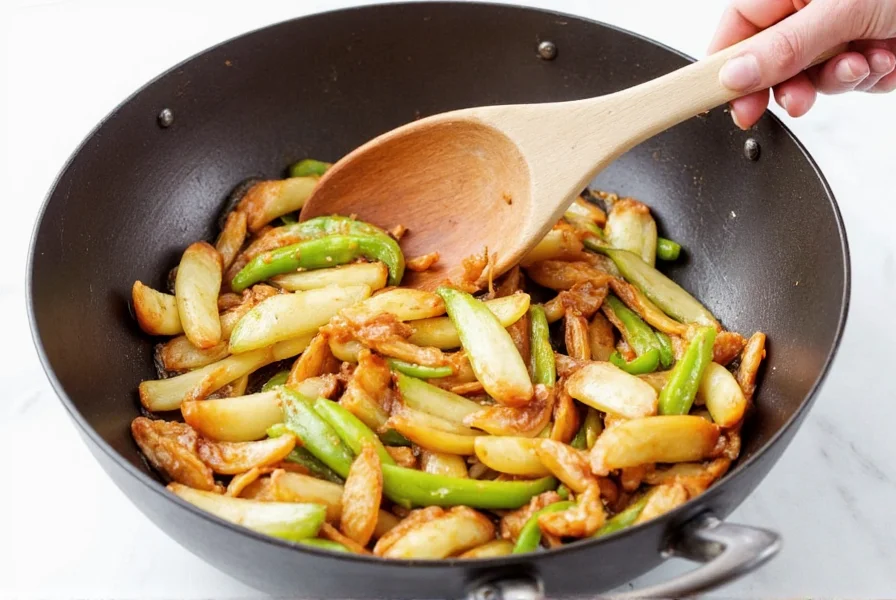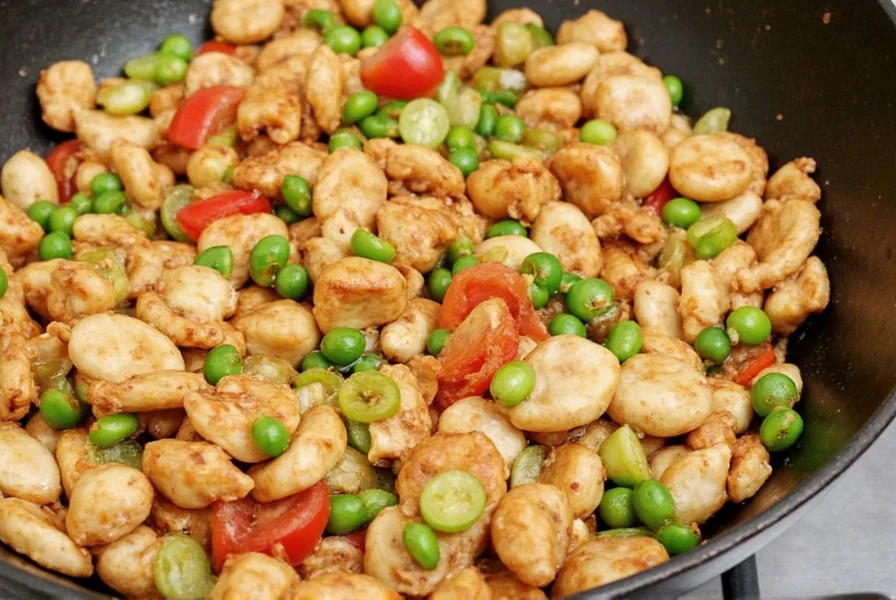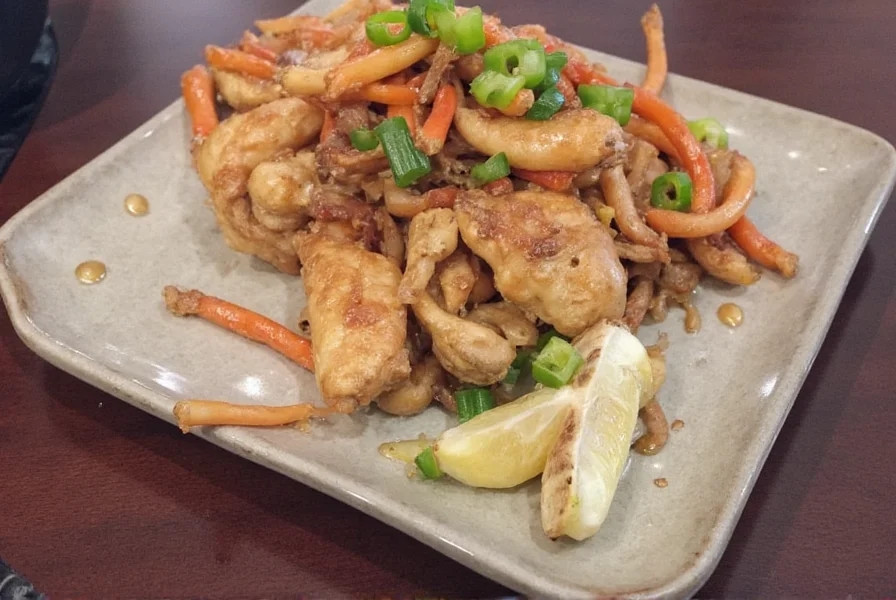Understanding how to properly incorporate ginger into wok cooking separates authentic Asian cuisine from mediocre imitations. This versatile root transforms simple ingredients into complex, aromatic dishes when used correctly in high-heat wok preparation.
The Science Behind Ginger in Wok Cooking
Ginger's volatile compounds react differently under high heat compared to other cooking methods. When added to a properly heated wok (typically between 350-400°F), ginger releases zingiberene and other aromatic compounds that create that signature "wok hei" or breath of the wok. The key is timing—adding ginger too early burns it, while adding it too late fails to infuse the oil properly.
Professional chefs follow the "garlic first, ginger second" principle in many Asian cuisines. Garlic tolerates slightly higher temperatures before burning, so it goes in first, followed by ginger about 15-20 seconds later. This sequence maximizes flavor extraction without bitterness.
Types of Ginger for Wok Cooking
Not all ginger works equally well in wok cooking. Understanding the differences ensures optimal results:
| Ginger Type | Best For Wok Cooking? | Recommended Use |
|---|---|---|
| Fresh young ginger | ★★★★★ | Ideal for stir-fries; milder, juicier, less fibrous |
| Mature ginger | ★★★☆☆ | Better for braises; stronger flavor, more fibrous |
| Pickled ginger | ★☆☆☆☆ | Not recommended; alters dish chemistry |
| Ginger paste | ★★☆☆☆ | Emergency substitute only; lacks fresh complexity |
Mastering Ginger Preparation Techniques
Proper ginger preparation significantly impacts wok cooking results. Many home cooks make critical errors that compromise flavor:
The scraping method—rather than peeling—preserves more flavorful compounds. Use a spoon to gently scrape off the thin skin, which removes impurities while keeping the ginger's essential oils intact. This technique works particularly well with young ginger's delicate skin.
For optimal flavor release in wok cooking, julienne cutting (thin matchstick pieces) provides the ideal surface area-to-volume ratio. This allows ginger to cook evenly without burning while maximizing flavor infusion. Avoid mincing ginger for most stir-fries, as tiny pieces burn quickly in the high-heat wok environment.

Common Ginger Wok Mistakes to Avoid
Even experienced cooks make these critical errors when using ginger in wok cooking:
- Adding ginger to cold oil—Always heat oil first to proper smoking point before adding aromatics
- Using dried ginger powder—Lacks volatile compounds essential for authentic wok hei
- Overcooking ginger—Burns within 30 seconds at proper wok temperatures
- Washing ginger after cutting—Dilutes essential oils and creates splatter hazards
Signature Ginger Wok Recipes
Certain dishes showcase ginger's transformative power in wok cooking. These authentic preparations demonstrate proper technique:
Kung Pao Chicken with Precision Ginger Timing
This Sichuan classic requires ginger added precisely 10 seconds after garlic. The sequence creates layered aromatics where ginger provides brightness without overpowering. Use 1:2 ginger-to-garlic ratio by volume for balanced flavor.
Black Bean Sauce Stir-fry with Ginger Infusion
Professional chefs create a ginger "oil" base by heating thin ginger slices in oil for 20 seconds before adding black bean sauce. This technique extracts maximum flavor while preventing bitterness.

Ginger Storage for Optimal Wok Performance
Freshness directly impacts ginger's performance in wok cooking. Store unpeeled ginger root in an airtight container with a paper towel in the refrigerator vegetable drawer. Properly stored, ginger maintains optimal volatile compound levels for 2-3 weeks.
For extended storage, freeze whole ginger root. Frozen ginger grates beautifully directly into hot woks, releasing more aromatic compounds than thawed ginger. Many professional Chinese kitchens use this technique for consistent flavor year-round.
Health Benefits of Proper Ginger Wok Cooking
When cooked correctly in a wok, ginger retains more beneficial compounds than boiled or baked preparations. The high-heat, short-duration cooking preserves gingerols—the active compounds responsible for ginger's anti-inflammatory properties.
Studies show wok-cooked ginger dishes maintain up to 85% of their gingerol content compared to 60% in boiled preparations. This makes properly executed ginger wok cooking not just flavorful but potentially more beneficial for digestion and inflammation reduction.
Conclusion: Elevating Your Wok Cooking with Ginger
Mastering ginger in wok cooking transforms ordinary stir-fries into authentic culinary experiences. The precise timing, proper preparation, and understanding of ginger's chemical reactions under high heat separate professional results from amateur attempts. By implementing these techniques, home cooks can achieve restaurant-quality results that showcase ginger's complex flavor profile without bitterness.
What's the ideal amount of ginger for wok cooking per serving?
For most stir-fry dishes, use 1-2 teaspoons of julienned ginger per serving. Delicate dishes like vegetable stir-fries work best with 1 teaspoon, while robust meat dishes can handle up to 2 teaspoons. Always adjust based on ginger freshness—older ginger requires slightly more due to diminished volatile compounds.
Can I substitute dried ginger for fresh in wok cooking?
Dried ginger makes a poor substitute in authentic wok cooking. The high-heat process requires fresh ginger's volatile compounds to create proper wok hei. Dried ginger lacks these compounds and will burn quickly, producing bitterness. In emergencies, use 1/4 teaspoon ginger powder per tablespoon of fresh ginger required, but expect significantly different flavor results.
Why does my ginger always burn in the wok?
Ginger burns when added to oil that's too hot or left in the wok too long. Proper technique: heat oil to shimmering (not smoking), add ginger 15-20 seconds after garlic, and stir constantly for no more than 30 seconds before adding liquids or other ingredients. If your kitchen has good ventilation, you should smell the ginger's aroma within 10 seconds of adding it to the oil.
Does ginger type affect wok cooking results significantly?
Yes, ginger variety dramatically impacts wok cooking. Young ginger (spring harvest) has thinner skin, higher moisture content, and milder flavor ideal for delicate stir-fries. Mature ginger (winter harvest) has stronger, spicier flavor better suited for braises. For most wok stir-fries, young ginger provides superior results with its brighter, less fibrous profile that integrates seamlessly into high-heat cooking.
How can I tell if my ginger is fresh enough for wok cooking?
Fresh ginger for wok cooking should feel heavy for its size, have taut smooth skin without wrinkles, and yield slightly when pressed. When scraped, it should release a strong, bright aroma immediately. Avoid ginger with soft spots, mold, or a musty smell—all indicate degraded volatile compounds that won't perform well in high-heat wok cooking. Properly fresh ginger will sizzle audibly when added to hot oil.
Frequently Asked Questions
What's the ideal amount of ginger for wok cooking per serving?
For most stir-fry dishes, use 1-2 teaspoons of julienned ginger per serving. Delicate dishes like vegetable stir-fries work best with 1 teaspoon, while robust meat dishes can handle up to 2 teaspoons. Always adjust based on ginger freshness—older ginger requires slightly more due to diminished volatile compounds.
Can I substitute dried ginger for fresh in wok cooking?
Dried ginger makes a poor substitute in authentic wok cooking. The high-heat process requires fresh ginger's volatile compounds to create proper wok hei. Dried ginger lacks these compounds and will burn quickly, producing bitterness. In emergencies, use 1/4 teaspoon ginger powder per tablespoon of fresh ginger required, but expect significantly different flavor results.
Why does my ginger always burn in the wok?
Ginger burns when added to oil that's too hot or left in the wok too long. Proper technique: heat oil to shimmering (not smoking), add ginger 15-20 seconds after garlic, and stir constantly for no more than 30 seconds before adding liquids or other ingredients. If your kitchen has good ventilation, you should smell the ginger's aroma within 10 seconds of adding it to the oil.
Does ginger type affect wok cooking results significantly?
Yes, ginger variety dramatically impacts wok cooking. Young ginger (spring harvest) has thinner skin, higher moisture content, and milder flavor ideal for delicate stir-fries. Mature ginger (winter harvest) has stronger, spicier flavor better suited for braises. For most wok stir-fries, young ginger provides superior results with its brighter, less fibrous profile that integrates seamlessly into high-heat cooking.
How can I tell if my ginger is fresh enough for wok cooking?
Fresh ginger for wok cooking should feel heavy for its size, have taut smooth skin without wrinkles, and yield slightly when pressed. When scraped, it should release a strong, bright aroma immediately. Avoid ginger with soft spots, mold, or a musty smell—all indicate degraded volatile compounds that won't perform well in high-heat wok cooking. Properly fresh ginger will sizzle audibly when added to hot oil.











 浙公网安备
33010002000092号
浙公网安备
33010002000092号 浙B2-20120091-4
浙B2-20120091-4